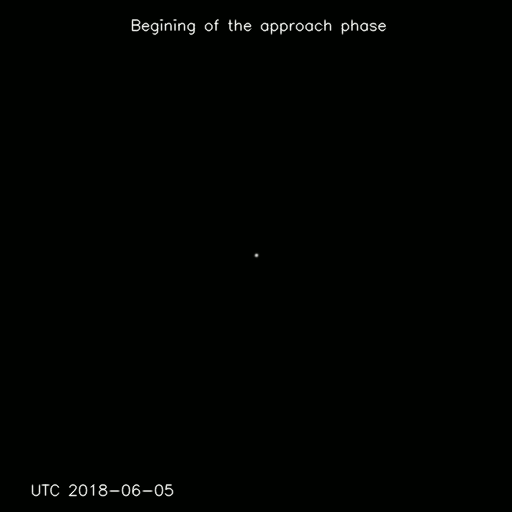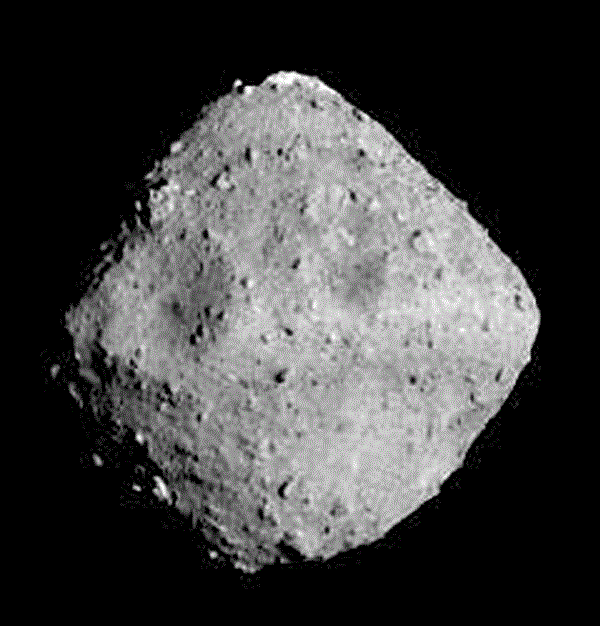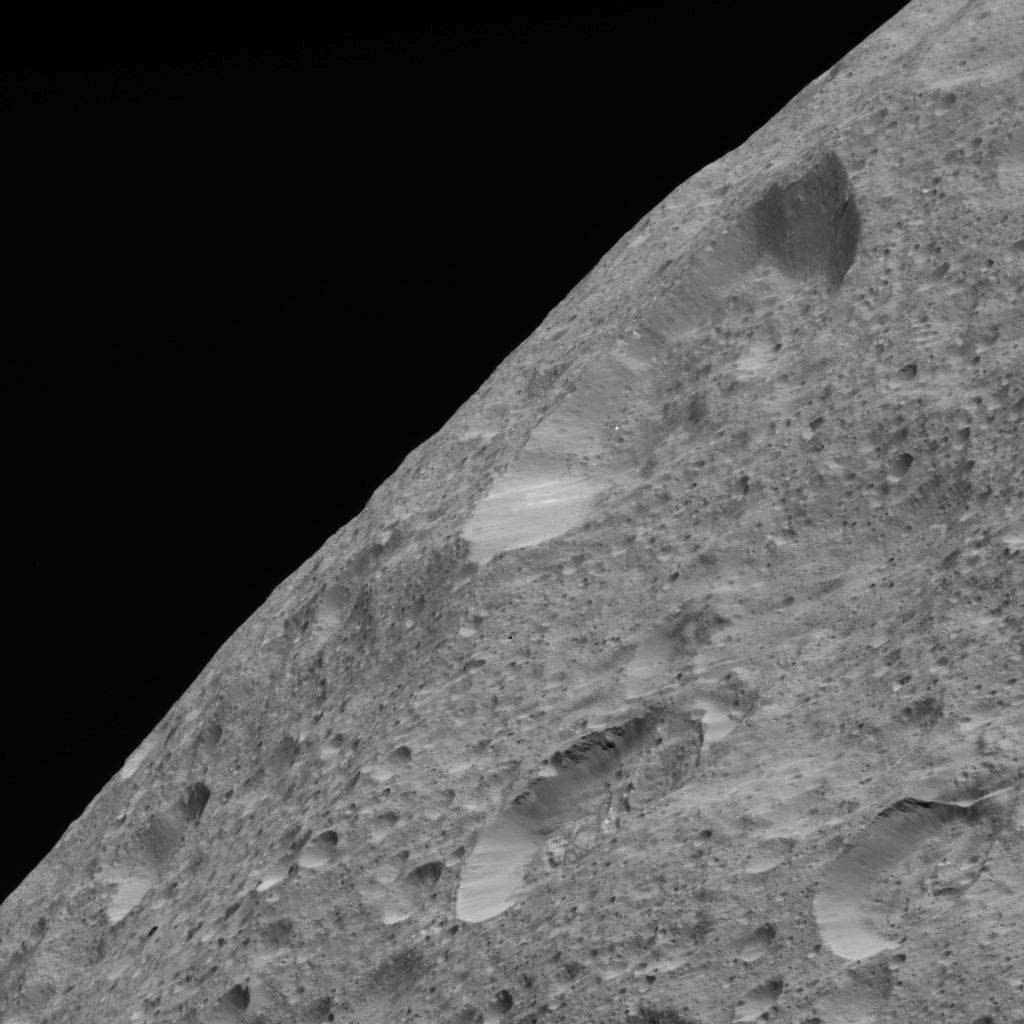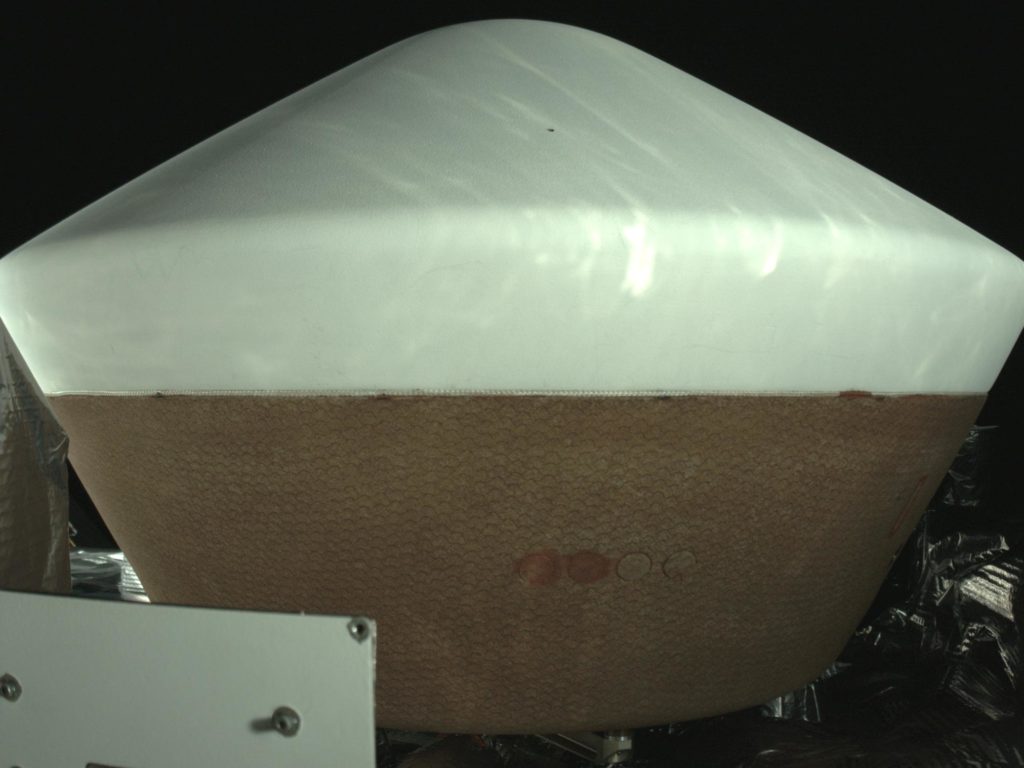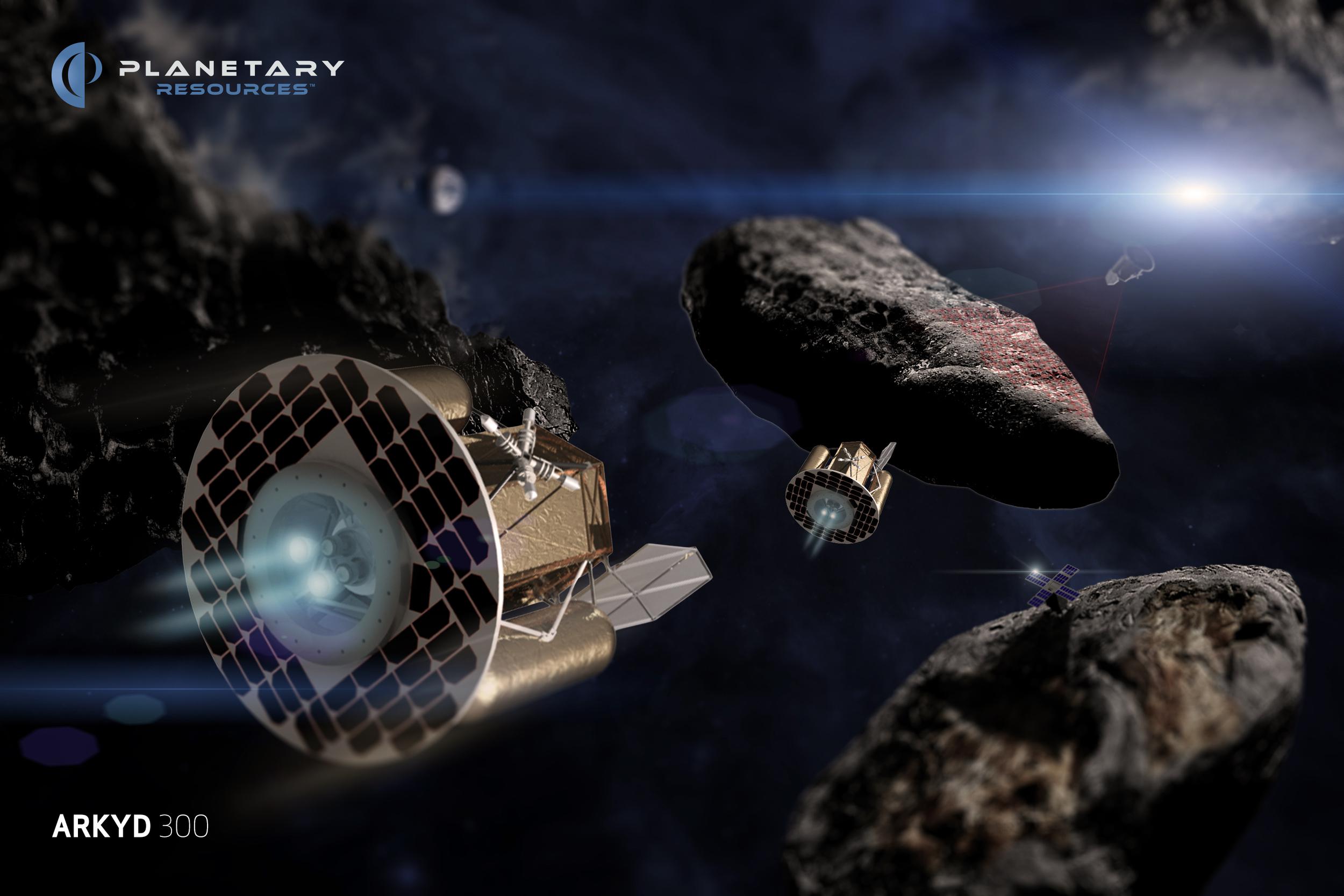
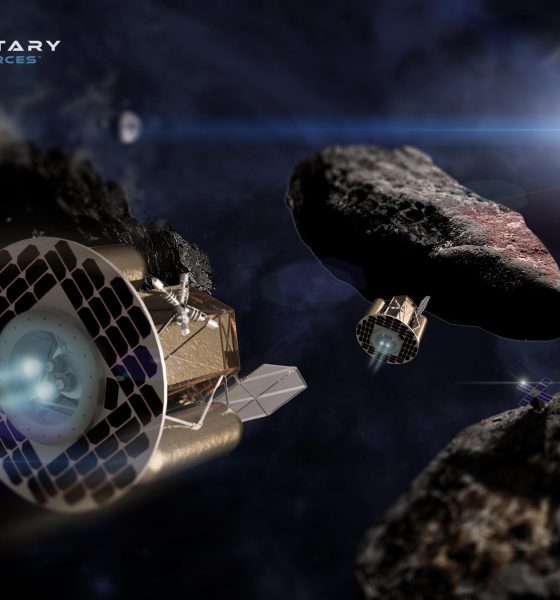
News
Asteroid mining startup faces uphill battle despite industry’s huge promise
Asteroid mining startup Planetary Resources, arguably the pathfinder for the industry’s growing charge, has had difficulty securing reliable funding capable of fueling the company’s aspirations of exploring and mining near-Earth asteroids for resources that could be a boon for in-space industries. Despite the company’s struggles, the near-future prospects of asteroid mining remain bright.
First reported by Geekwire last week, Planetary Resources CEO Chris Lewicki spoke to attendees of the NewSpace 2018 Conference about the status of the struggling asteroid mining company, frankly noting that PR “made a risky and aggressive choice [in 2017] to double down on asteroid exploration” only to have a promising funding round collapse before it could be completed. Without that funding, that company was forced to dramatically shrink its payroll and functionally end all research and development, while also ending operations of a successful satellite tech demonstrator launched in January 2018.
Fundamentally, the difficulties assailing Planetary Resources are unfortunate but should come as no surprise, and they certainly should not take away from the undeniable promise of asteroid mining as both an industry in itself and as an enabler of many other forms of in-space technology and economy, ranging from convenient propellant depots in space to serious, cost-effective manufacturing in zero-gravity.
Further, while the hardware and knowledge needed to successfully gather, process, and refine large quantities of rock from asteroids are extremely immature, a majority of them have already been very successfully demonstrated in space, including an ion thruster-power asteroid orbiter in its sixth year of exploring the massive Ceres and Vesta asteroids and two electrically-powered spacecraft headed to their own respective asteroids – one of which arrived just weeks ago – with plans to collect samples from the ancient surfaces before returning to Earth. Put simply; the technologies present on the extraordinarily successful asteroid explorer spacecraft funded thus far by government space agencies are likely to dramatically grow scientific understanding of the composition of near-Earth asteroids, while also giving private companies a baseline or ceiling for what is achievable today.
- Before Hayabusa2’s arrival, Ryugu was nothing more than a handful pixels on a screen. (JAXA, University of Tokyo, collaborators)
- A pair of images captured by Japan’s Hayabusa2 spacecraft show the Ryugu asteroid’s weird features. (JAXA, University of Tokyo, collaborators)
- The limb of the massive asteroid Ceres, captured by NASA’s Dawn spacecraft in June 2018. (NASA)
- NASA’s OSIRIS-REx probe is scheduled to arrive at the asteroid Bennu in December 2018. (NASA)
Of note, Japan’s Hayabusa2 sample return mission reportedly cost the country less than $300 million, whereas NASA’s comparable OSIRIS-REx sample return mission cost the agency nearly $1 billion including launch. The $50 million in private capital raised thus far by Planetary Resources has clearly not been enough to get the company into deep space, although it did enable the technology development and facilities required to build several impressive cubesat demonstrators, one of which is currently in orbit after successfully completing its mission and demonstrating the integration of true off-the-shelf sensing equipment on a spacecraft.
In 2017, the government of Luxembourg signed into law the creation of state-funded program intended to incubate asteroid mining startups, and Planetary Resources received a bit less than $30 million in cash and grants in 2016 to facilitate the company’s goal of launching the first private asteroid prospector satellite in 2020. While unclear how this factored into PR’s present financial situation, there may be hope of additional financial assistance to help the company build a path to sustainability. In the meantime, CEO Chris Lewicki is still confident that Planetary Resources will find the resources they need to build spacecraft that will take the company to asteroids and towards the creation of a whole new industry.

Elon Musk
Elon Musk just said some crazy stuff about the Tesla Roadster

Elon Musk appeared on the Moonshots podcast with Peter Diamandis today to discuss AGI, U.S. vs. China, Tesla, and some other interesting topics, but there was some discussion about the upcoming unveiling of the Roadster, the company’s electric supercar that will arrive several years after it was initially slated for release.
Musk made some pretty amazing claims about the Roadster; we already know it is supposed to be lightning-fast and could even hover, if Tesla gets everything to happen the way it wants to. However, the car has some pretty crazy capabilities, some of which have not even been revealed.
On the podcast, Musk said:
“This is not a…safety is not the main goal. If you buy a Ferrari, safety is not the number one goal. I say, if safety is your number one goal, do not buy the Roadster…We’ll aspire not to kill anyone in this car. It’ll be the best of the last of the human-driven cars. The best of the last.”
🚨 Elon on the Roadster unveiling, scheduled for April 1:
— TESLARATI (@Teslarati) January 6, 2026
Musk makes a good point: people who buy expensive sports cars with ridiculous top speeds and acceleration rates do not buy them to be safe. They hope they are safe in case of an emergency or crash, but safety is not at the forefront of their thoughts, because nobody buys a car thinking they’ll crash it.
The Roadster is truly going to push the limits and capabilities of passenger vehicles; there’s no doubt about that. Tesla plans to show off the new version car for the first time on April 1, and Musk has only hinted at what is possible with it.
Musk said back in November:
“Whether it’s good or bad, it will be unforgettable. My friend Peter Thiel once reflected that the future was supposed to have flying cars, but we don’t have flying cars. I think if Peter wants a flying car, he should be able to buy one…I think it has a shot at being the most memorable product unveiling ever. [It will be unveiled] hopefully before the end of the year. You know, we need to make sure that it works. This is some crazy technology in this car. Let’s just put it this way: if you took all the James Bond cars and combined them, it’s crazier than that.”
Production is set to begin between 12 and 18 months after the unveiling, which would put the car out sometime in 2027. Hopefully, Tesla is able to stay on track with the scheduling of the Roadster; many people have been waiting a long time for it.
News
Tesla launches hiring for Robotaxi program in its twentieth country
Overall, the hiring signals Tesla’s aggressive timeline for global dominance in autonomous mobility.

Tesla has launched a hiring initiative for its Robotaxi program in its twentieth country, as the company posted two new jobs in Thailand this week.
Tesla is hiring in Bangkok and Kowloon for the Vehicle Operator position, which is related to data collection, and is the first in Thailand, but the twentieth country overall, as the company tries to expand into other markets.
🚨 BREAKING: Tesla is hiring additional full-time Vehicle Operators in Bangkok, Thailand.
Previous openings were 6-month, part-time roles. These are equivalent to AI Safety Operator roles in the U.S. pic.twitter.com/R6LzoU1bos— Tesla Yoda (@teslayoda) January 5, 2026
Tesla has had active job postings for Vehicle Operator positions in the United States, India, Israel, Taiwan, Germany, the Czech Republic, Hungary, the UK, Finland, Switzerland, Sweden, the Netherlands, Austria, Spain, Norway, Italy, and Turkey in past listings.
These postings are not all currently available, likely because the roles have been filled.
Thailand is the most recent, and broadens the company’s potential path to expanding its ride-hailing program, which is only active in the United States in Austin, Texas, and the California Bay Area, so far.
These roles typically involve data collection, which assists in improving Autopilot and Full Self-Driving operation. Tesla’s self-driving programs utilize real-world data that is accumulated and stored, observing vehicle and traffic behavior, as well as tendencies that are performed by human drivers to help increase safety and overall performance.
Overall, the hiring signals Tesla’s aggressive timeline for global dominance in autonomous mobility. Although the company has several high-profile rivals and competitors in the field, it has established itself as a main player and a leader in the development of autonomous technology, especially in the U.S., as its FSD suite is refined on almost a weekly basis.
The Full Self-Driving suite is available in seven countries and territories currently, including the U.S., Canada, China, Mexico, Puerto Rico, Australia, and New Zealand. Its biggest goal for expansion is currently the European market, where regulatory hurdles have been the main bottleneck prolonging its launch on the continent.
Tesla has performed months of testing in various European countries, including France and Spain, and does have support in some areas from various regulatory agencies. However, the company is hoping to get through this red tape and offer its suite in Europe for the first time, hopefully this year.
News
Tesla China rolls out Model Y upgrades, launches low-interest financing
These strategies are aimed at improving the ownership experience and keeping vehicle pricing competitive in the world’s largest electric vehicle market.

Tesla has rolled out minor updates to the five-seat Model Y in China, upgrading the vehicle’s center display to a higher-resolution 16-inch 2K screen. The electric vehicle maker also introduced attractive financing options, including 7-year low-interest rates, to offset the new purchase tax on EVs.
These strategies are aimed at improving the ownership experience and keeping vehicle pricing competitive in the world’s largest electric vehicle market.
Five-seat Model Y gets larger, better display
With its recent update, all three variants of the five-seat Model Y now feature an upgraded 16-inch 2K resolution center display, which replaces the vehicle’s previous 15.4-inch 1080p panel. This screen was already used in the six-seat Model Y L, and it offered improved visual clarity. Tesla China has also updated the Model Y’s headliner to black, giving the vehicle a sleeker appearance.
Prices of the five-seat Model Y remain unchanged at RMB 263,500, RMB 288,500, and RMB 313,500 for the respective trims. This update enhances the cabin experience as domestic rivals are already adopting high-resolution screens. As noted in a CNEV Post report, some domestic automakers have begun rolling out vehicles equipped with 3K-resolution displays.
New financing offers
Tesla also launched ultra-long-term financing offers for its locally produced models in China, which include the Model 3 sedan, the five-seat Model Y, and the six-seat Model Y L, through January 31, 2026. The 7-year option features an annualized fee rate as low as 0.5%, which is equivalent to 0.98% interest. This is expected to save customers up to RMB 33,479 ($4,790) compared to standard rates.
A 5-year zero-interest plan is also available, and it has been extended to the Tesla Model Y L for the first time. These incentives help offset China’s new 5% purchase tax on New Energy Vehicles (NEVs) in 2026-2027. Some of Tesla’s rivals in China have announced in recent months that they would be covering the purchase tax owed by buyers early this year.
